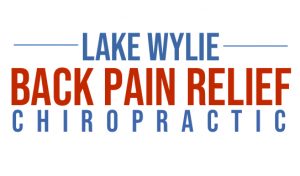What Is It? Whiplash is an injury to the soft tissues in the neck including ligaments, joint capsules, muscles and their tendons, and intervertebral disks. It can also involve the nervous system tissues in more severe cases, result in radiating arm pain.
How does it happen? During a car crash, most commonly a rear-end collision. The sudden jolt occurs so fast we cannot brace ourselves adequately and the head accelerates back and forth beyond the limits of the ligaments that hold our bones firmly together (often referred to as a “sprain”). Because of the significant range of motion of the neck, the weight of the head, and how the head is suspended on the neck, the neck is particularly vulnerable to this type of injury (more commonly worse in woman due to females having a more slender neck).
What are the symptoms? The primary symptom is neck or upper back pain that may develop immediately or be delayed days, weeks, and sometimes months. A partial list of possible symptoms (each injured person’s symptoms are different) includes muscles spasms, loss of movement, headache, dizziness, concentration and/or memory loss, difficulty swallowing, chewing and/or hoarseness, burning or tingling, shoulder/arm/hand radiating pain, and more.
How is it diagnosed? Even when symptoms do not seem significant, a healthcare provider can diagnose the condition by taking a careful history and performing a physical exam. X-rays showing a change in the curvature or contour of the neck, and/or MRI or CT scan to better assess the disk and nerve roots when pain radiates down an arm may also be indicated. When persistent concentration/memory loss is present, a consult by a neuropsychologist is helpful.
How is it treated? In most cases, non-surgical methods are usually appropriate. If you go to a medical doctor (MD), typical approaches include a wait and watch approach and/or medications such as anti-inflammatory drugs, pain killers, and/or muscle relaxants. MDs may refer the patient to physical therapy. When these methods fail, referral to a physiatrist may result in injection therapy (epidural steroid, facet injection, trigger point injections). Chiropractic care includes spinal manipulation, mobilization, soft tissue release techniques, exercise training, activity modification training, and physical therapy modality use (electrical stimulation, traction, ultrasound, low level laser therapy—LLLT, TENS unit). Care may also include a mix of provider approaches, when appropriate.
How can it be prevented? The degree of severity of whiplash can be decreased or maybe avoided completely with the following: the use of seatbelts (especially in high speed collisions); placing the headrest close to the head (less than 1 inch) and high enough to avoid “ramping” over it; placing the seat back more vertical/upright can also minimize ramping; do not partake in distractive activities while driving—cell phone use, adjusting the radio, taking your eyes off the road (eye contact during conversation), dozing off, and reading a book (this is more common than you think!), for example; bracing yourself has not been shown to be very helpful—whiplash happens too quickly to voluntarily brace your neck muscles; for athletes, wear appropriate protective gear when engaging in sporting activities and use proper form / technique during the athletic activity.
Important to know! Chiropractors have a unique advantage over other healthcare providers as spinal manipulation and other manual therapies have been shown to yield the highest levels of satisfaction and faster recovery rates compared with other forms of healthcare.

